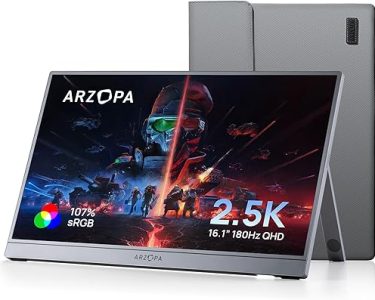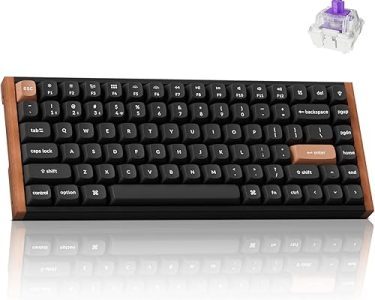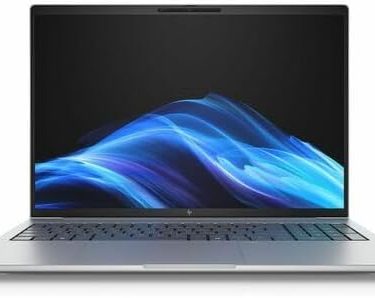The most adaptable PC monitor I’ve ever examined is the Corsair Xeneon Edge 14.5. I used it since it can be used as a supplementary display. Nevertheless, it may also be connected to a 360mm radiator mount on a PC desktop or affixed to a 1/4-20 tripod mount. It can be mounted inside a desktop computer to add style or serve as a dashboard for performance monitoring, or it can be used as part of a streaming setup or connected to a flight or driving simulator rig.
Specs and Features
The easiest way to describe the Corsair Xeneon Edge 14.5 is as a tiny super-ultrawide touchscreen. As its name suggests, it is 14.5 inches diagonal, yet its resolution is 2560 x 720 and its aspect ratio is around 32:9.
- 14.5-inch display with a 32:9 aspect ratio
- 2560 x 720 is the native resolution.
- Type of panel: 5-point multi-touch AHVA-LCD
- 60 Hz is the refresh rate.
- No adaptive sync
- HDR: Not present
- Ports: 1x HDMI, 1x USB-C with DisplayPort and Power Delivery
- No audio
- Extra features: 360mm mounting option, 1/4-20 tripod mount, magnetic desk stand, and magnetic mount
- Cost: $249.99 MSRP
In addition to its unusual size, the Xeneon Edge 14.5 is notable for its extensive mounting possibilities. It comes with a magnetic desk stand for desktop use, but it may also be used with a tripod or a 360mm PC desktop radiator mount. The monitor can even be affixed to the side of a desktop computer (or any other magnetic surface) using the integrated magnets.
Design
The design of the Corsair Xeneon Edge 14.5 makes it clear that it is not your average computer monitor. It is thick and broad. Although the body is made of plastic, some of the plastics are stiff and offer a luxuriously velvety touch. The Edge resembles a high-end gaming accessory, like a controller or joystick, more than a display.
A desktop stand is included in the package. The stand is a straightforward plastic wedge that fastens to the back of the monitor using a magnet. Perhaps because they are thinner, the stand’s plastics feel notably less sturdy than those of the monitor itself. Additionally, there are no alternative viewing angles available on the stand. Both vertical and horizontal orientations are possible for the monitor.
Nevertheless, the monitor has a telescope arm mount with two 1/4-20 mounting points for attachment to tripods or other arms and stands that support this mounting option, as well as the ability to attach to a 360mm fan mount and hang magnetically to metal surfaces, including the front or side of many PC desktop cases. Additionally, it supports the Frame LCD mount from Corsair, which is compatible with certain Corsair cases.
The Xeneon Edge 14.5’s versatility is demonstrated by its extensive selection of choices. While playing a game on-screen, I primarily utilized it as a little second display to check manuals and Discord. However, you may attach it to your gaming setup as a control panel or a gaudy billboard. It can show the performance data from your setup or, if you want just some bling, a repeated video clip of your choosing.
Connectivity
The Corsair Xeneon Edge 14.5 can only be connected via HDMI or USB-C with DisplayPort. Nevertheless, an HDMI-to-HDMI cable is not included with the monitor. Instead, a DisplayPort-to-HDMI connection is included with the device. Therefore, even though the monitor has an HDMI connector, it only supports DisplayPort input by default.
For the majority of PC users, both ports must be connected simultaneously. Although the majority of desktop graphics cards do not have USB-C, the USB-C connection can supply both DisplayPort video and electricity. However, the power and data required for the Xeneon Edge 14.5 to function at its maximum capacity cannot be provided via HDMI or DisplayPort alone. Because of this, the majority of PCs need two connections: HDMI or DisplayPort for video and USB-C for power and data.
The ports are positioned on the monitor’s back in a narrow cutout. This is a sensible decision because it minimizes the space occupied by the connectors. However, connecting cables that are abnormally stiff or have very large connectors may be challenging. It can be a little challenging to fit the HDMI-to-DisplayPort connection that comes with the monitor into the available space.
The last cable offered by Corsair is an internal USB header to USB-C cable, which is not very common. This is intended to be used when the screen is positioned within a desktop computer. Although I didn’t utilize the monitor in this manner, I anticipate that it is necessary.
Image Quality
A secondary issue with the Corsair Xeneon Edge 14.5 is image quality. It isn’t designed to display games or even create content. The most demanding use case that will probably be presented to it is video playback. The image quality can therefore be summed up in a single word. Sufficient.
The monitor features an LCD backlight and an AHVA panel. When displaying dark information, VA panels exhibit less “glow” and have superior contrast compared to IPS panels. This, along with the glossy texture of the display, creates a rich contrast. For a second, I thought it may be OLED.
But don’t get too thrilled. When I positioned the Xeneon Edge 14.5 next to an OLED monitor, my tricked eyes were fixed. Although the Edge has a great appearance, an OLED display is more bright and rich.
If you use the Xeneon Edge 14.5 near windows or in a light area, the glossy coating will be a problem. Additionally, the stand’s lack of flexibility exacerbates reflections, making it difficult to change the display’s angle when a reflection is in your line of sight. I would have liked a finish that was semi-glossy or matte.

Conversely, the Xeneon Edge 14.5 outperforms most displays in terms of resolution. On a 14.5-inch screen, a resolution of 2560 x 720 translates to roughly 183 pixels per inch. A 27-inch 4K display, which offers roughly 163 pixels per inch, is lower than that. The clarity is noticeable when watching videos, but it may be most useful when widgets are displayed. Icons and fonts are clear.
The Xeneon Edge 14.5 is not HDR compatible. Motion clarity is poor due to its 60Hz refresh rate and lack of adaptive sync. However, since the display won’t be used frequently to see fast-moving video or display HDR, these problems aren’t really concerning.
Conclusion
Despite being a specialized monitor, the Corsair Xeneon Edge 14.5 fills a market need and provides exceptional value. The majority of the monitor’s direct rivals are less costly, and while they might function similarly, they don’t have Corsair’s user-friendliness and appealing appearance. Although they are somewhat more costly, other options, such as the Asus ProArt Display PA147CVD, have an appealing style.
The Edge is also incredibly adaptable, supporting a variety of mounting options such as a 360mm radiator mount for desktop PC placement and a 1/4″-20 tripod mount. This number of mounting possibilities is not available in any of the alternatives.
But it’s not flawless. Because there are no buttons, even simple display tweaks require Corsair’s iCUE software. Also, because of Windows 11’s window management constraints, the monitor is not very helpful when used with a fullscreen application.




